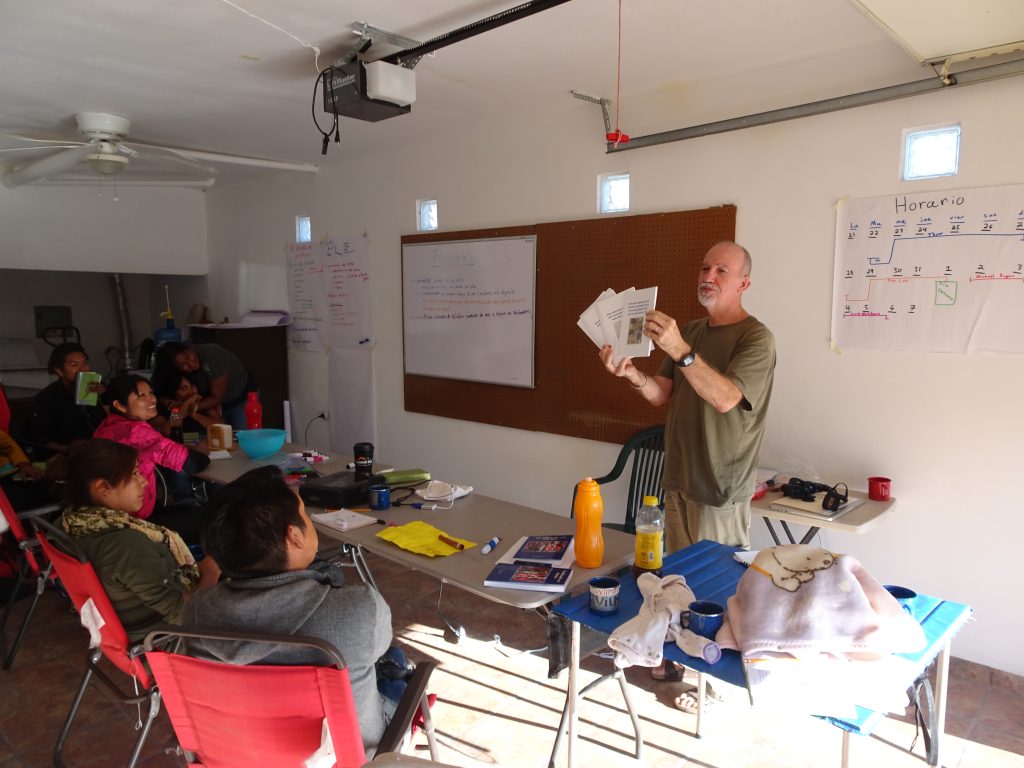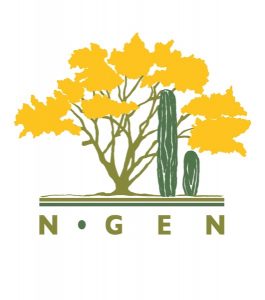
Title: Language Documentation
Convenor: Cathy Moser Marlett
General notes
Cathy began with a brief introduction to the language documentation project that she and Steve Marlett conducted and are conducting in Punta Chueca and Desemboque. She had a set of slides based on a talk that Steve Marlett gave in Oaxaca at CEDELIO.
Then she talked about where the Comcaac live in Sonora, Mexico, a bit about the people and the language. She talked about the legacy of her parents (Edward and Mary B. Moser) working on the Seri language, and how their work led to the trilingual Seri-Spanish-English dictionary. She explained how a Seri editorial committee was involved in the final dictionary product. One of the results was a workshop for Seri writers.
The Seri language is a language isolate, which means it’s not related to neighboring languages (and no other known languages). It is a structurally complex language. It is not taught in the local schools. Literacy in Seri is low (but Spanish reading and writing are taught in school). Even though the use of the language is strong, there are a lot of external pressures, such as the internet, television, and more contact with Spanish.
Cathy then gave a background of the Seri language documentation project, much of it having to do with the existing interest in local biology. This corresponds with younger Seris who are already involved in projects of monitoring plants and animals, for instance. One of the goals was to train these folks in how to videotape and conduct interviews, in Seri. Other goals include: teach students how to read and write, teach basic grammar, work with them to make literacy materials. A big point was how to return what they learned back to the community.
There are over 200 hours of video interviews made by Seri young folks (this was not done by outsiders), all conducted all in Seri. Written permission was first sought from each of the interviewees prior to being recorded. The interviewers made up the permission slips themselves. The videos were to be archived and not to be used by outsiders, but by local community members; the videos belong to them. The young folks and the interviewees were paid to participate and the interviewees were also given basic foods to participate.
Steve and Cathy spent six months in Desemboque and six in Punta Chueca, over a two year period.
Although the space for the classes in Desemboque was not ideal, the classes were held in a vacant house belonging to María Luisa Astorga, and worked well. There were between 9-12 students in each class. Outside of class, the interviews were conducted by the interviewer and the interviewee, with another young person working with the camera. The idea was that the relationship between the interviewee and interviewer was more like an elder talking to a young person, perhaps a family member. Since there weren’t usually outsiders around, the talk was very fluid. The interviewers learned a lot in the process.
There were some tangible results from the Desemboque class, and there are more than 12 young people who now feel capable to read and write in Seri. The students wrote a riddle book about shells, and a number of essays were written in Seri about mollusks and used in a calendar that focused on the subject.
Cathy noted that an interesting aside was that during the time in Desemboque at least 7 people with PhDs in different fields came and observed the classes; this gave a special connection between the Seri young people and researchers interested in Seri knowledge.
Steve and Cathy also had a class in Punta Chueca, with two groups every day that participated, in a house dedicated for use for their classes. In the Punta Chueca classes there was more participation by young men. There was more participation by family in these classes as well. Some literacy books came out of this (with illustrations). More texts were written in Seri. Classes in grammar were given where they also practiced editing texts and reading texts. Some of the results of the class include positive contacts with a lot of young folks. One person started to teach young folks in the afternoons. Young people became good readers and read with confidence. Older folks came and watched the class. They listened and nodded.
In general they learned about the importance of having an interest in the natural environment of the area. Marletts saw the importance of having written descriptions with which people can interact, the importance of literacy and how important it is to be adaptable, creative and patient.
Cathy showed some video clips of interviews between young folks and elders.
She opened up the discussion.
Mike Gray shared that he worked with some folks from Taiwan who wanted to make a documentary about ironwood and that he hired a former student of the class to do the interviews with 3-4 carvers. She did an excellent job, and it was a great experience.
Julia Montaño said that it was been important for to research more about plants, animals and other topics and so that kids speak and write in their language. Her dad has been an influential figure in this project. She has been giving classes to up to18 primary school kids.
Mayra Estrella had a great experience in the class. At her age she couldn’t write in her language and in the first day of classes she couldn’t read something in a book she saw but after the first few days she could read it. It gave her confidence. In the schools this is something is missing. Seri is not taught. She proposed that some of the students who finished in the class that they should teach language to kids. The students of the class are trained in this and should help out.
This is a slow process. Someone asked what would you like to see as a goal regarding this project? What would be the next step? Cathy responded that she would like to see Seri being taught in the schools and to train Seri individuals to be teachers. Another dream is to have a place where people could go with a library, with writing materials and with everything so that people can continue this, a place that is open to the community.
Carolyn asked how we could make changes and influence the SEP to change this.
Socrates talked about his experience. He was trained as a teacher in Desemboque. When he explained things in his class, when he was a teacher, it was much more effective to teach in Seri (and then in Spanish). So he thinks that there should be classes in both languages.
Someone mentioned that there is a meeting of the government agencies in Punta Chueca and Desemboque the 10 and 11 of November. And the SEP will be part of this (as well as the CONANP). We can talk to Ana Luisa Figueroa to find out more about it.
Socrates said that the CDI says it’s the community’s responsibility to take care of this and not the responsibility of the government. The SEP says they don’t have the money to do anything about this. They can translate books but not much else.
Laurie asked a question about the presentation. She asked about how vulnerable is the Seri language to being lost. What can we do about being proactive about it not being lost. To what extent is the language in danger of not being spoken? Cathy responded that some things that are definitely being lost are, for example, kinship terms (people say “mama y papa”). Seri has one of the most complex kinship term systems in the world. She said that kids did not know the names of many types of shells. Loss of lexical items is something that is happening in languages all around the world.
Laurie said that we could think of activities to support families that all of the children (no matter if their mother is or is not Seri) so that children can socialize with other women in the community who speak Seri. One could provide materials and advice about this to promote bilingual upbringing (so that Spanish doesn’t become dominant).
The students in the classes have a real appreciation for the language in the classes once they see the complexity of the grammar of the language. They realize the value and importance of their language, and it gives them pride in their language.
Learning from the elders has been a really positive experience from participants in the class. They want to continue doing the classes. Young people are learning a lot from the classes. The older folks tell lots of stories and tell tons of information that the young people didn’t know before. The elders also really enjoyed it since they were so happy to have someone who wanted to talk to them and learn from them.
This project has also generated more interest in oral tradition. Hopefully this project can serve to continue young folks working with elders while they are still alive.
In the interviews, all parties knew that this material was made for them and not for outsiders, so people were much more free than they otherwise would be. The idea is to have it for future generations.
The president of elders (presidente del consejo de ancianos) wanted to make a class to teach the numbers since they are very long, since this is also something that is being lost.


